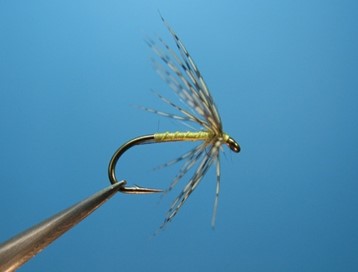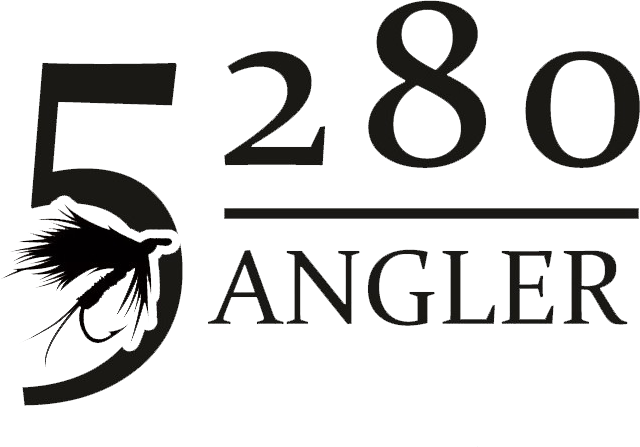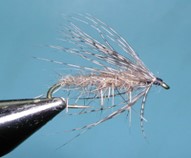
I was cogitating on what subject I should write about for this month’s article when my friend Dan e-mailed me to ask me a question regarding soft hackle flies. As I thought of the answer, I also thought this would be a great subject for this month’s article.
The earliest mentioning of Soft Hackle wet flies in print were in Dame Juliana Berners’ 1496 Treatise of Fishing with an Angle. It is very likely that their history extends even farther back than that. But it wasn’t until Sylvester Nemes’ 1975 The Soft-Hackled Fly that they began to receive the attention they deserved in the United States, and became known in general as “soft-hackle” flies (Incidentally, The Soft Hackled Fly was updated in 2006 as The Soft-Hackled Fly and Tiny Soft Hackles).
The most basic version of the soft-hackle fly consists of a hook shank wrapped with thread, floss, or peacock herl and a hackle (partridge, grouse, hen or some other soft-hackled bird) wound around the forward part of the shank. Here the hackle suggests the legs or emergent wings of various insects such as caddis or mayflies. Slightly more elaborate versions include a small thorax of dubbed fur just behind the hackle. Others —often more specifically imitative of a mayfly nymph—will sport a tail and perhaps a body of dubbed fur, in which case the fly is often referred to as a soft-hackle nymph or “flymph,”. However you tie it, the soft hackle wet fly deserves an honored place in your fly box. These incredibly versatile patterns will catch many species of game fish under a wide range of conditions. They’re so easy to fish and are very productive at any time of day, in any weather, and at all depths from just under the surface to down deep.
The soft-hackle wet fly is usually tied on wet fly hooks (any shape, model, and size you like) because it is usually most effective fished just under the surface. You may, however, tie it on lighter-wire dry-fly hooks to fish it in the surface film, perhaps as a drowned nymph that didn’t quite make it. A general rule for determining which hook to use is this: If you want the fly to imitate a caddis, tie it on a regular or short-shank hook without a tail; if you want it to imitate a mayfly, tie it on a regular or long-shank hook and add a tail.
Probably the most common way to fish a soft-hackle wet fly is to cast it across and slightly downstream, letting it sink and then swing in the current, rising with the tightening line much as a natural rises to the surface before hatching. It’s on this rise that fish usually strike. Often the best depth is very shallow. Presented in this manner these patterns represent insects which are struggling just below the surface. The soft, wet, flowing hackle simulates the activity of thrashing legs and beating wings. Another productive method is to cast the fly upstream on a short cast and then let it dead-drift back to you just under the surface (or, if tied on a light-wire hook, in the surface film).
When fishing in tight situations let the fly “swim” below you, directly downstream. Use the rod to put it beside boulders, under trees, along seams. Wherever you know fish are hanging out. Alternate lifts with short drifts. In a small creek, this is a great way to go since trees make it hard to get a good cast in.
Soft hackle flies are also very productive in lakes and ponds for most species of trout. These patterns are often fished in the surface film as an emerging insect. This can be a very productive method during mayfly and caddis hatches. Cast the fly with a floating line ahead of cruising trout. Barely twitch the fly as the fish approaches. Soft Hackles can also be fished deep around submerged weeds or even along more barren rocky bottoms. When retrieved through still water, the long supple hackles mimic swimming legs. Several species of dragonfly nymphs swim with their legs extended.
Soft hackles can save the day when other patterns just don’t seem to have the juju. So, go out – fish long and prosper!
Until next time!
Soft Hackle Wet Fly – Partridge & Yellow:
Hook: TMC 3769, or any hook that you prefer, #12-20 Thread: 6/0 -8/0 Yellow Uni-Thread Body: Yellow thread or floss Ribbing: Gold wire, optional Thorax: Hare’s Ear or Gray Squirrel Blend Hackle: Hungarian Partridge Head: Yellow Thread or dubbed hare’ ear or gray squirrel
Soft Hackle Nymph – Partridge and Hare’s Ear:
Hook: TMC 3769 or 5262, or any hook that you prefer, #14-20 Thread: 6/0 – 8/0 black Uni-Thread Body: hare’s ear dubbing Ribbing: Gold Wire, optional Thorax: Hare’s Ear Hackle: Hungarian Partridge Head: Black thread


